What is Applied Behavior Analysis in Simple Terms? Applied Behavior Analysis (ABA) therapy is a special kind of therapy that helps kids learn new skills and improve their behavior. Just like how we go to school to learn new things, ABA therapy is a way for kids to learn and practice new skills in a structured and supportive environment. In this blog we will explore the various aspects of ABA.
What does ABA therapy stand for?
ABA therapy stands for Applied Behavior Analysis therapy. It’s a type of therapy that focuses on using behavioral techniques to teach and reinforce positive behaviors and skills, while reducing negative behaviors. It involves breaking down skills into small steps and using positive reinforcement to encourage progress. ABA therapy can be used to help individuals with autism spectrum disorder (ASD) improve their communication, social skills, and daily living skills.
How Does ABA Therapy Work?
A therapist who is trained in ABA will work one-on-one with the child to teach them various skills. These skills can include:
- Communication: Learning how to talk, use gestures, or use communication devices.
- Social Skills: Learning how to play with others, share, and take turns.
- Daily Living Skills: Learning how to do everyday activities like brushing their teeth, getting dressed, and eating meals.
Techniques Used in ABA
The therapist will use different techniques to help the child learn. Some of these techniques include:
- Positive Reinforcement: Giving rewards or positive feedback when the child does something good. For example, if a child says “please” when asking for something, they might get a sticker or a small treat as a reward.
- Task Analysis: Breaking down a complex task into smaller, more manageable steps. For example, if the goal is to learn how to brush teeth, the therapist might first teach the child to pick up the toothbrush, then to put toothpaste on it, and so on, step by step.
- Prompting and Fading: Using prompts or cues to guide the child towards the desired behavior and gradually reducing these prompts as the child becomes more independent.
The Goal of ABA Therapy
The ultimate goal of ABA therapy is to help kids with autism or other challenges learn important skills and behaviors so they can feel more confident and successful in their daily life. Over time, with lots of practice and positive reinforcement, the child can learn to do these things on their own and become more independent.
Benefits of ABA Therapy
- Improved Communication: Helps children learn to express their needs and interact with others.
- Enhanced Social Skills: Encourages positive interactions with peers and adults.
- Increased Independence: Teaches essential daily living skills, leading to greater self-sufficiency.
- Behavior Management: Reduces problematic behaviors and replaces them with positive ones.
Collaboration and Consistency
ABA therapy often involves collaboration between the therapist, parents, and teachers to ensure consistency and reinforcement of skills across different settings. This team approach helps to generalize the skills learned during therapy to various aspects of the child’s life.
What is an ABA report for a child with Autism?
An ABA (Applied Behavior Analysis) report for a child with autism typically includes detailed information on the child’s behavior, progress, and goals for future sessions. The report may include the following components:
- Introduction: This section provides an overview of the child’s diagnosis and background information, including any relevant medical or developmental history.
- Assessment results: The report may include the results of any assessments conducted to identify the child’s strengths, weaknesses, and areas for improvement. This could include assessments of communication skills, social skills, and adaptive behavior.
- Behavior plan: The behavior plan outlines the specific behaviors that the child is working to improve, along with the strategies and interventions that will be used to achieve these goals.
- Progress report: The progress report summarizes the child’s progress towards their goals over a specified period of time. This may include data on the frequency and duration of target behaviors, as well as any changes in the child’s overall functioning.
- Recommendations: The report may include recommendations for future interventions or modifications to the behavior plan based on the child’s progress and needs.
- Collaboration: ABA reports may also include information on collaboration with other professionals, such as speech therapists, occupational therapists, and teachers.
Overall, an ABA report for a child with autism provides a detailed summary of the child’s behavior, progress, and goals for future sessions. The report is often used to communicate with caregivers, educators, and other professionals involved in the child’s care in order to ensure a collaborative and effective approach to treatment.
What Is a Behavior Plan?
A behavior plan is a structured and individualized strategy designed by therapists to help individuals, often children, learn new skills and behaviors. The primary objective of a behavior plan is to promote positive behaviors, reduce problematic ones, and enhance the individual’s overall ability to function effectively in various environments. Here’s a detailed breakdown of what a behavior plan entails and how it works:
Identifying Target Behaviors and Setting Goals
The first step in creating a behavior plan is to identify specific behaviors that need to be addressed. These target behaviors can range from learning to communicate more effectively to following instructions or reducing problematic behaviors such as aggression or self-injury. Once these behaviors are identified, clear and measurable goals are set for the individual to achieve. These goals provide a roadmap for what the behavior plan aims to accomplish.
Developing the Plan
After identifying the target behaviors and setting goals, a comprehensive plan is developed. This plan outlines the specific steps and strategies that will be used to help the individual learn new skills and behaviors. Key components of the plan may include:
- Positive Reinforcement: Using rewards to encourage and reinforce desired behaviors. This could be in the form of praise, tokens, or other incentives that are meaningful to the individual.
- Breaking Down Complex Behaviors: Decomposing complex behaviors into smaller, manageable steps to make learning more achievable. This technique, often referred to as task analysis, helps the individual master each step before moving on to the next.
- Prompts and Cues: Utilizing verbal, visual, or physical prompts to guide the individual towards the target behavior. These prompts are gradually faded as the individual becomes more proficient.
- Consistency and Routine: Establishing consistent routines and expectations to provide a predictable environment, which can be particularly beneficial for individuals with autism or other developmental disorders.
Data Collection and Monitoring
An essential aspect of a behavior plan is the ongoing collection of data to monitor the individual’s progress. Data is gathered on the frequency, duration, and intensity of the target behaviors, as well as the individual’s response to various interventions. This data is analyzed regularly to assess the effectiveness of the plan and to make any necessary adjustments. If certain strategies are not yielding the desired results, the plan can be modified to better meet the individual’s needs.
Collaboration and Team Effort
A behavior plan is a collaborative effort that involves not only the therapist but also the parents, caregivers, teachers, and anyone else involved in the individual’s care. This teamwork ensures that the plan is holistic and considers all aspects of the individual’s life. Regular communication and meetings are held to discuss progress, share observations, and make any needed modifications to the plan. This collaborative approach ensures that everyone is on the same page and working towards the same goals.
Creating a Positive and Supportive Environment
The overarching goal of a behavior plan is to help the individual learn new skills and behaviors in a positive and supportive environment. The plan is designed to be practical and achievable, tailored to the individual’s unique needs and abilities. By focusing on positive reinforcement and providing consistent support, the plan aims to build the individual’s confidence and independence.
A behavior plan is a vital tool in helping individuals, particularly those with developmental disorders, achieve their full potential. By identifying specific behaviors, setting measurable goals, and employing evidence-based strategies, a behavior plan provides a structured approach to learning and development. Through collaboration and ongoing support, the plan ensures that the individual receives the guidance and encouragement needed to succeed. Whether it’s improving communication skills, following instructions, or reducing problematic behaviors, a well-crafted behavior plan can make a significant difference in the individual’s life.
What Behaviors and Goals May Be Included in a Behavior Plan for Autism?
Here are examples of behaviors and goals that may be included in a behavior plan for a child with autism:
- Communication: A goal may be for the child to learn to communicate more effectively, such as using words or gestures to request items or express their needs. A behavior plan may include strategies such as using visual aids, modelling appropriate language, and providing positive reinforcement when the child uses language to communicate.
- Social skills: A goal may be for the child to improve their social skills, such as making eye contact or taking turns in a conversation. A behavior plan may include strategies such as role-playing social situations, using social stories to teach appropriate behavior, and providing positive reinforcement when the child demonstrates appropriate social skills.
- Self-care: A goal may be for the child to improve their ability to take care of themselves, such as dressing themselves or brushing their teeth. A behavior plan may include strategies such as breaking down self-care tasks into smaller steps, providing visual prompts or cues, and providing positive reinforcement when the child completes the task.
- Problem behaviors: A goal may be for the child to reduce problem behaviors, such as aggression or self-injury. A behavior plan may include strategies such as identifying the triggers for the behavior, teaching replacement behaviors, and providing positive reinforcement when the child demonstrates appropriate behavior.
These are just a few examples of the types of behaviors and goals that may be included in a behavior plan for a child with autism. The specific behaviors and goals will vary based on the child’s individual needs and abilities, and the behavior plan will be tailored to meet those needs in a positive and supportive way.



